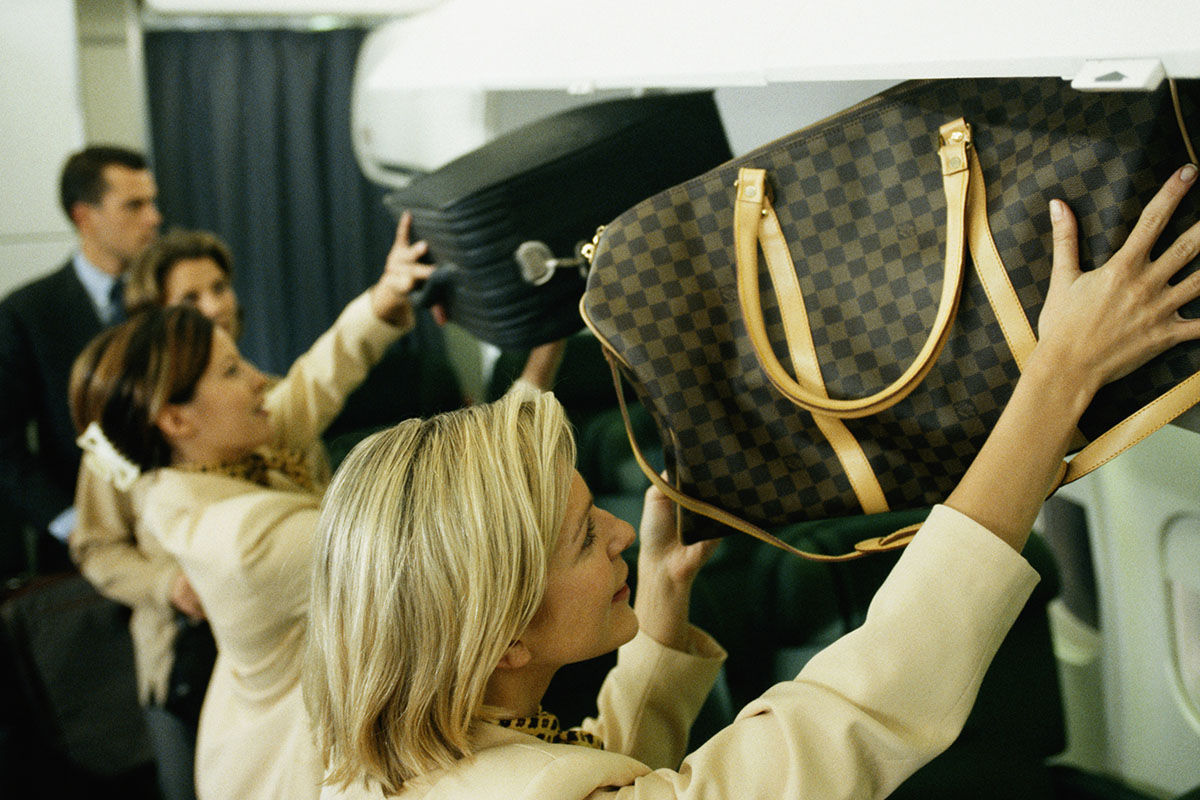Carry-on baggage basics

What to know to better ensure your luggage gets on the airplane with you
With most airlines charging fees for passengers to check their bags, it’s not surprising that the overhead bins on many flights are stuffed with carry-ons as people try to save money. For travelers trying to make the trip as pain-free as possible, choosing the right carry-on luggage can make a big difference.
However, different rules apply to domestic and international flights, so it’s smart to look at your airline’s guidelines and measure your baggage well before you leave home.
While the rules for individual airlines vary for domestic flights, Delta, United, and American airlines all state that carry-on bags should not exceed 45 linear inches in combined length, width, and height—that’s roughly 22 inches by 14 inches by 9 inches. Southwest Airlines allows a slightly larger dimension, 24 inches by 16 by 10 inches.
But in mid-2015, global airlines announced new, smaller size restrictions for carry-on luggage, mostly for international flights. Guidelines from the International Air Transport Association state that the “optimal size” for carry-on bags is no larger than 21.5 inches tall by 13.5 inches wide by 7.5 inches deep—although it’s not clear how strictly those guidelines are being enforced. Some travelers have discovered their tried-and-true carry-ons no longer meet those guidelines, particularly if the airline requires passengers to test their bags in a sizing box before boarding.
The measurements include wheels, top of the handle when lowered, and pockets (which may protrude beyond the limits when over-filled). Some models that manufacturers market as being a “carry-on size” in reality exceed those restrictions. If your bag is too big or there’s not room in overhead bins, the airline staff might require you to gate-check it before getting on.
SMART SECRETS
Packing bags and storing them on the airplane requires travel smarts
Remember the “two items per person” carry-on rule includes purses, laptop, or camera bags. Carry a purse or other bag small enough to slip inside another briefcase or bag.
Larger bags fit overhead, smaller ones fit underneath the seat. Travelers are not guaranteed overhead space or help with bags.
If you have an over-sized looking bag—even if it fits inside the lines of the “bag sizing outline” generally seen near the gate—an agent may still ask you to gate-check your luggage, which can either be for plane-side return as you exit the airplane or retrieval in baggage claim. This is typically free of charge as long as it meets size limits.
Attach a lock and luggage tag to all carry-on bags just in case you must check it at the last moment, or if you accidentally leave a bag on the airplane.
PRACTICAL STYLE
Hard shell, soft sides, and wheels—oh, my!
When choosing a new carry-on, consider weight and durability. Hard-shell luggage, which is often lighter than it looks, is more waterproof than soft luggage and easier to clean (although not as easy to stuff extra items into). Hard-shell models may not have an exterior pocket, which is convenient for storing a bag of liquids to pull out quickly at the security checkpoint.
Some luggage comes with in-line wheels (tip the suitcase, then pull or push), while other models have spinner wheels, which can move in all directions (no need to tip from upright position). Four-wheel models are easier to maneuver in crowded areas and great for escalators; two wheels are less bulky and better for rough terrain.

